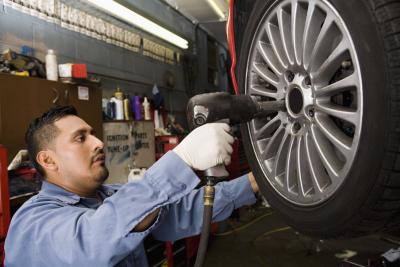
Hub bearings are what connect your wheels to your car. The bearings reduce the friction in the wheels and allow them to turn smoothly and efficiently. If one of the bearings becomes worn or damaged, all of the hub bearings need to be replaced. In newer cars this usually means the entire wheel hub assembly needs to be replaced, which is actually a relatively simple process. There are ways to tell if you need to replace hub bearings.
Drive your car by yourself in a low traffic area with the radio and air vent fan turned off, and listen for noise. A whine, squeak, chirp, squeal or moan coming from the direction of a wheel while driving, or a grinding noise when turning, can indicate a worn hub bearing.
Jack the car up so the suspect wheel is elevated off the ground.
Grab the tire on each side, left and right, then try to rock it. If it feels loose at all, then the bearings are loose and need to be replaced.
If you're still not sure, put the car in neutral (for front tires on front-wheel drives or rear tires on rear-wheel drives) or make sure the emergency brake is off (for rear tires).
Rotate the tire by hand. Any roughness in the rotation or noise would indicate hub bearings that need to be replaced.